When the original DJI Inspire launched toward the end of 2014 it was revelation for those seeking to acquire good quality drone footage at a price that was much more affordable than any other option on the market. At the time DJI said they had designed the Inspire 1 to bridge the gap between hobbyists and Hollywood.
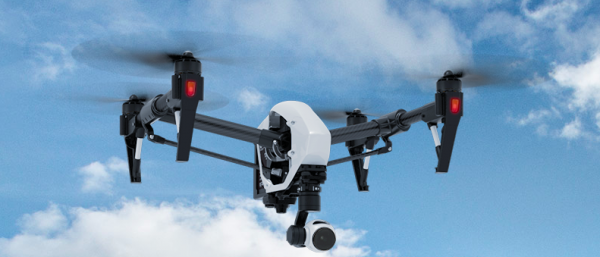
The Inspire 1 was initially available with a 1/2.3” sensor that had a fixed lens, and it could record at up to 25p in 4096 × 2160. It wasn’t till 2015 that DJI released the Zenmuse X5 and X5R camera modules, giving the Inspire 1 an interchangeable camera/lens system. It was certainly a big step up over the Phantom 2/3 and it instantly became the go to drone for a lot of filmmakers who couldn’t afford to use much more expensive platforms.
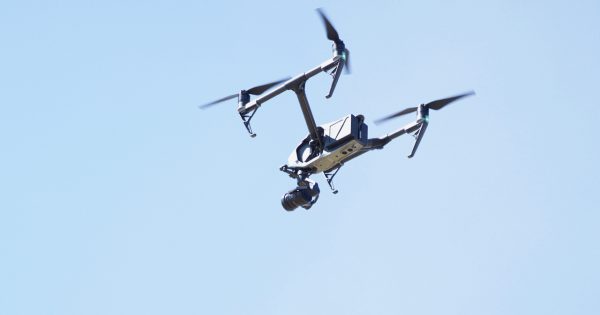
Step forward 3 years and DJI announced the new Inspire 2. DJI took what people liked about the Inspire 1 and improved on it. There are plenty of detailed reviews about what the Inspire 2 offers over the Inspire 1, so i’m not going to go into much detail about it, I’ll just list some of the key changes:
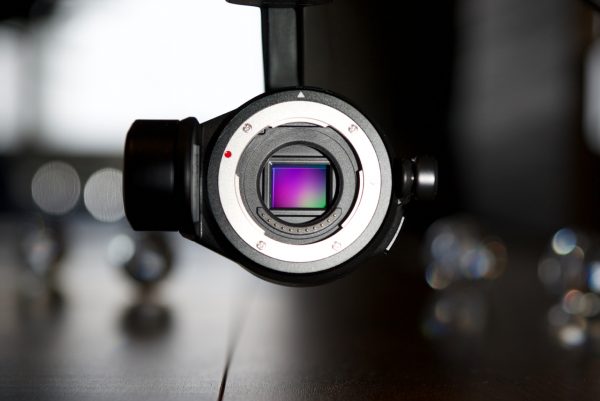
Camera And Image Processing
DJI designed an entirely new image processing system for the Inspire 2 called CineCore 2.0. This enables you to record 5.2K CinemaDNG video at 4.2Gbps (if you have the CinemaDNG license). To capture all that data the Inspire 2 now has an onboard SSD. The top of the range X5S camera features a micro 4/3 sensor with support for up to 10 different lenses, including zooms. Being able to use a wide variety of lenses is certainly a big selling point, and this feature alone is bound to attract a lot of filmmakers. An optional Apple ProRes license is also available that lets you record in all flavours of ProRes including 4444XQ. If you want to capture still images, there is a DNG RAW mode that allows you to take 30-megapixel still images. For news crews or outside broadcast you can stream video in broadcast-quality formats.
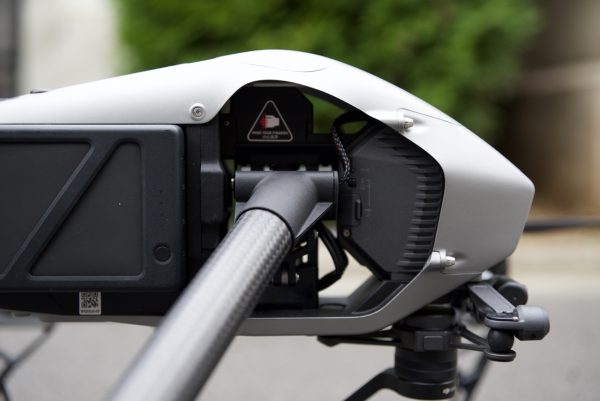
Obstacle Avoidance System
Forward and downward vision systems enable the Inspire 2 to detect obstacles up to 30 meters ahead, at speeds of up to 34mph (54kph)
at a controllable attitude angle of 25°. Upward facing infrared sensors scan obstacles 16ft (5m) above, adding protection when flying in enclosed spaces. Obstacle sensing systems are active during normal flight, RTH and all Intelligent Flight Modes.
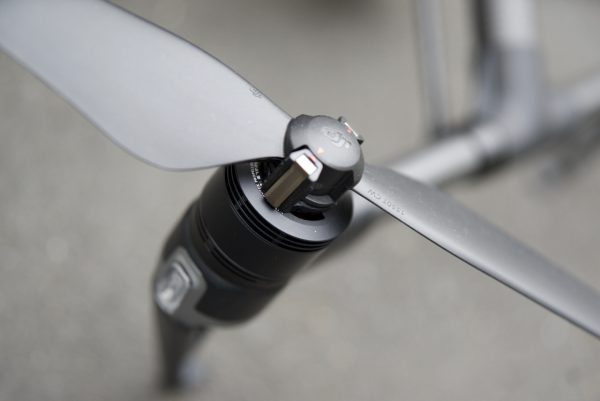
Speed
The Inspire 1 flew at speeds of up to 49 mph, the Inspire 2 can do 58 mph or 94 kph (Sport mode). While this speed increase is not really that overly impressive, given that the Mavic Pro and Phantom 4 can also achieve similar speeds, it’s the increase in acceleration that is the biggest difference from the Inspire 1.
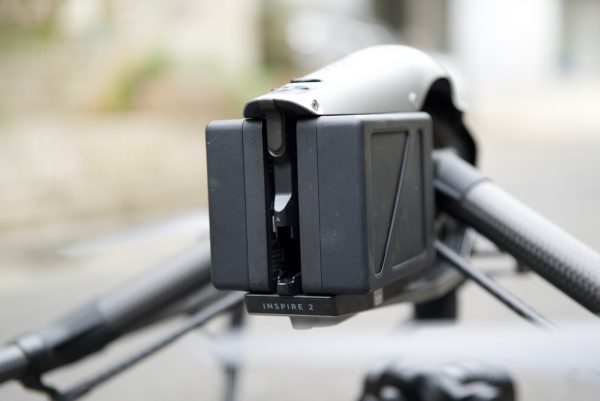
Longer Battery Life
With two batteries on the Inspire 2 it can fly for longer than the Inspire 1. According to DJI the operation time can reach 27 minutes on the Inspire 2, compared to 18 minutes on the Inspire 1
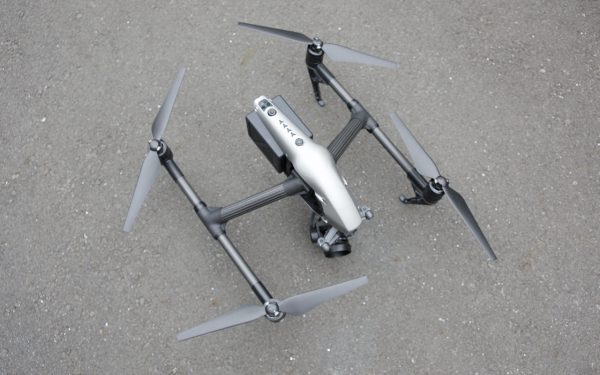
Colour
DJI made the Inspire 2 matte black and grey instead of the shiny, reflective white of the Inspire 1. The Inspire 1 was highly reflective and filmmakers will appreciate the darker matte colour change.
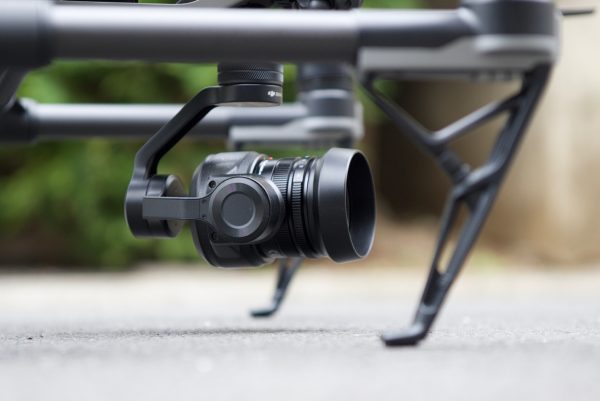
Price
The Inspire 2 is considerably more expensive than the Inspire 1 once you kit it out. The Inspire 1 originally retailed for $2999US at launch, and while the Inspire 2 also starts at that same price ($2999US), that price doesn’t include a camera or a gimbal. The basic 1-inch sensor, fixed lens Zenmuse X4S is an additional $600US. If you want to move to the Zenmuse X5S that is $1899US. If you purchase the Inspire 2 Premium Combo that includes an Inspire 2, Zenmuse X5S, and the CinemaDNG and Apple ProRes licenses it will cost you $6198US.
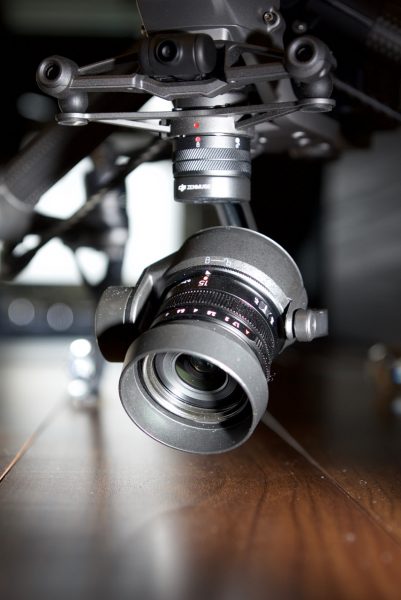
As there are lots of in-depth reviews on the Inspire 2 I want to focus primarily on usability and the camera and image quality. I also want to compare it to cheaper options such as the DJI Phantom 4 Pro.
Usability
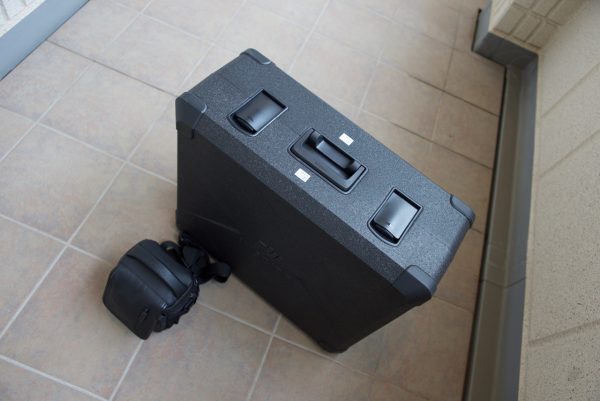
The Inspire 2 takes up a lot of space and it’s not the most convenient of items to carry around. Even with the removable propellors you can’t put it in a small back pack and go walking off into the forrest. You really do need to consider the size and portability if you are thinking about getting an Inspire 2. If you primarily work as a solo shooter, this is probably not the drone for you.
Unlike smaller drones like the Mavic Pro, you can’t store the Inspire 2 in its case without removing the propellers, gimbal assembly and camera. While it doesn’t take long to attach and set up these items, you certainly can’t pull it out of a bag and get it into the air as quickly as Mavic Pro or Phantom 4 Pro. But compared to much more expensive camera platforms it is a lot quicker to deploy and transport.
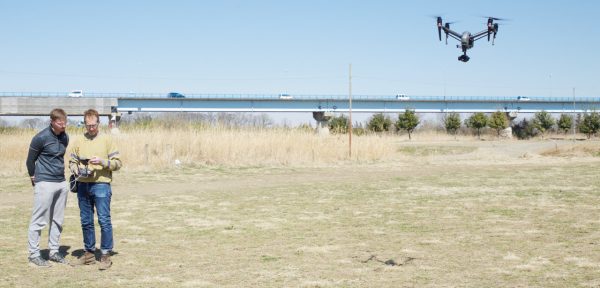
To road test the Inspire 2, Jeff Cooke, Taro Irei and I went out to shoot at a motocross practise track, 1.5 hours out of Tokyo. Our plan was to shoot with the drone and a ground based camera and then incorporate the shots together. This is the exact sort of real world scenario that you are usually going to encounter. Very rarely is drone vision the only vision used on any shoot or project. The whole idea for us was to see how well the Inspire 2 footage intercut with the camera I was shooting with on the ground.
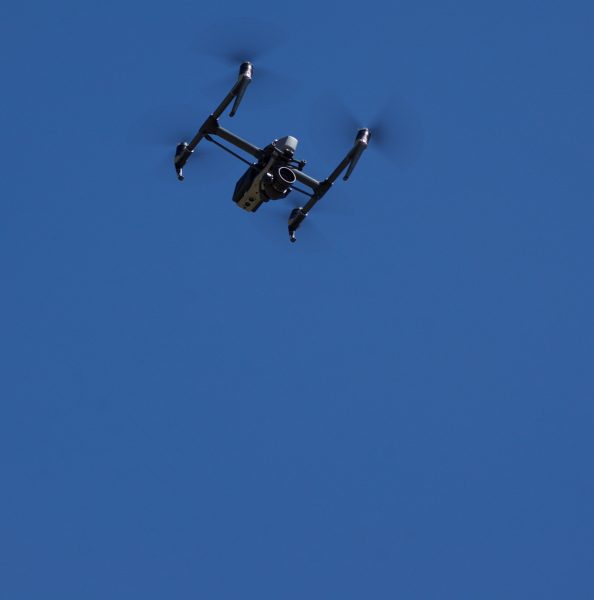
The conditions were perfect for flying, with blue skies and only a light breeze. Neither Jeff or I had ever flown a drone bigger than a Phantom before, so we were very mindful of being safe and not to fly beyond our capabilities. Filming motocross with a drone we had never used before was always going to be a bit tricky.
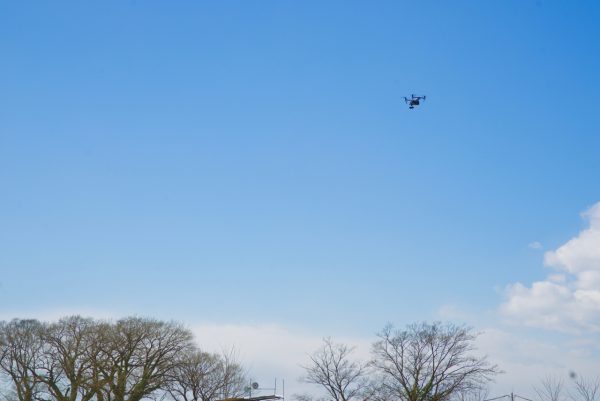
The first thing Jeff and I noticed was just how visible the Inspire 2 is when it is in the air. It can clearly be seen in the sky, even at elevated heights. This is great for keeping a visual reference of where the drone is at all times. If you were trying to shoot something inconspicuously then the Inspire 2 is definitely not the drone you should use. Once it’s in the air, everyone knows it’s there.
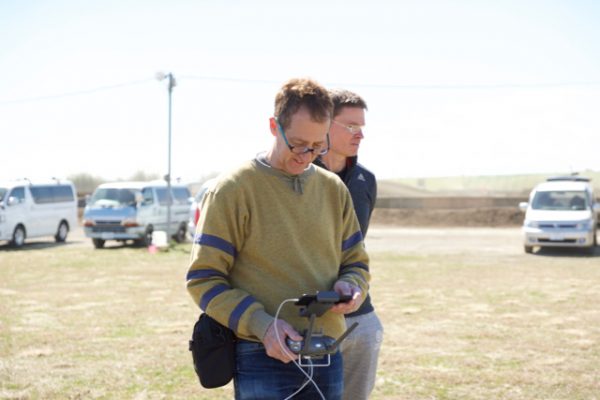
I think because the Inspire 2 is so big compared to a Phantom, you tend to be a little more focussed when flying it. You really do get a subconscious feeling that this a a professional film tool and I need to treat it as such. When you are flying a Mavic Pro or a Phantom in some ways it feels more like you are flying a toy. Jeff and I were definitely a lot more on edge flying the Inspire 2.
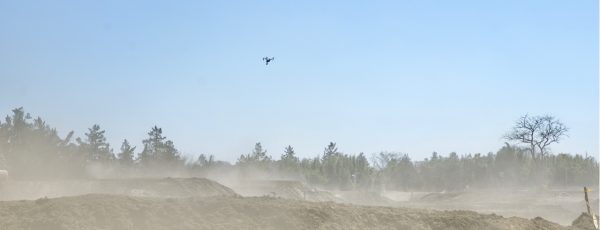
The Inspire 2 is very responsive and it accelerates very quickly. Trying to follow motocross riders on a tight and twisty circuit meant we were constantly accelerating and then breaking the drone. It handles going from rapid speed to a gentle stop very well. It takes a bit more effort to stop than say a Mavic or Phantom, but given its large size and weight, it does a very good job. On the Magic Pro is you try and stop it suddenly from going at any type of speed you will notice a jolt in your footage. The Inspire 2 feels very solid when it is flying around and it doesn’t have to keep constantly correcting itself to maintain position like the smaller Mavic Pro or Phantom 4 Pro. The gimbal certainly does an excellent job of always keeping your shots steady. We were able to get some good shots, but we still struggled at times trying to follow riders around the course. This was more to do with our lack of time using the drone, than the capabilities of the Inspire 2.
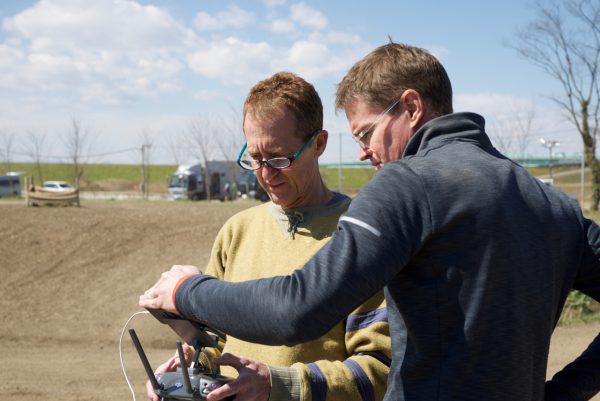
We tried to use the active track mode and I must admit we had mixed results. With so many riders on the track the system struggled at times to stay locked on a subject. We certainly didn’t make it easy for the Inspire 2 as the riders were able to accelerate and change direction a lot quicker than we could. I think the active track could of worked well if there had of been just one rider on the track.
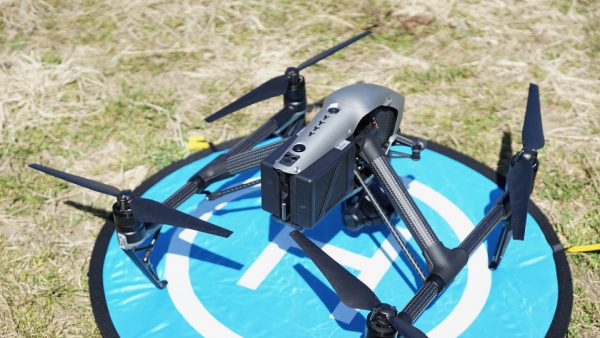
The biggest let down for us was the battery life, or lack of it. We were lucky to get 17 or 18min of flight time before we had to land the Inspire 2 and re charge the batteries. As the Inspire 2 was on loan from DJI we only had two batteries. Having that extra 5-6 minutes that you can get out of the Phantom 4 Pro or Mavic Pro makes a world of difference if you only have limited batteries. If I was an Inspire 2 owner I would want to probably have at least 3-4 sets (2 batteries to a set) of batteries as a minimum.
Our flight time was limited and there were lots of other shots we would of liked to have tried, but we couldn’t wait around for an hour between charges to get the Inspire 2 back in the sky.
I was impressed by the quality of the footage that we got out of the Inspire 2. We chose not to shoot in CDNG, and instead recorded in both ProRes 4444XQ and 422HQ. This was done as I wanted to see how it would match up with other cameras that can also shoot ProRes. The footage intercut quite well, and it was reasonably easy to get the drone and the ground camera to at least be similar enough that it wasn’t too jarring when you switch between the two.
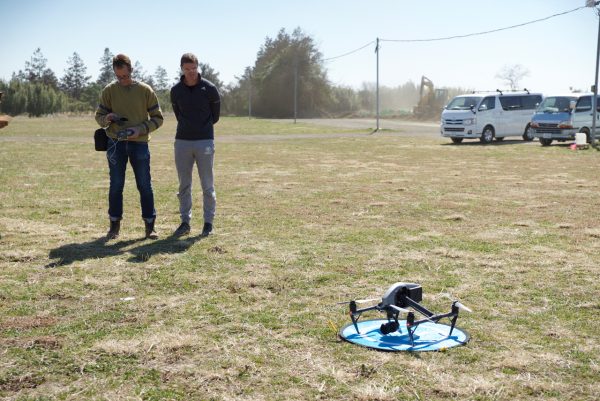
For a lot of shooting scenarios the only reason I would consider using an Inspire 2 over say a Phantom 4 Pro, is if the job required increased image quality, and if a lot of the key footage needed to come from a drone. In saying that I do think that both drones are targeted at different users. The Phantom 4 Pro is more for the occasional drone user who still wants to capture a reasonable quality image that could be intercut with other lower cost cameras without too many problems. The Inspire 2 is more for those users who are capturing drone footage on a very regular basis, or are offering a drone as part of their business model. The Inspire 2 fills the gap between professional and high end professional. While it can’t fly a RED or Arri, it is capable of getting images that will be perfectly acceptable for a lot of productions. A fully set up Inspire 2 kit with enough batteries, SSD media, spare parts and lenses is still gong to set you back close to $10000US. While this is certainly not cheap, it is considerably more affordable than a purpose built platform flying with a $60K camera and lens package.
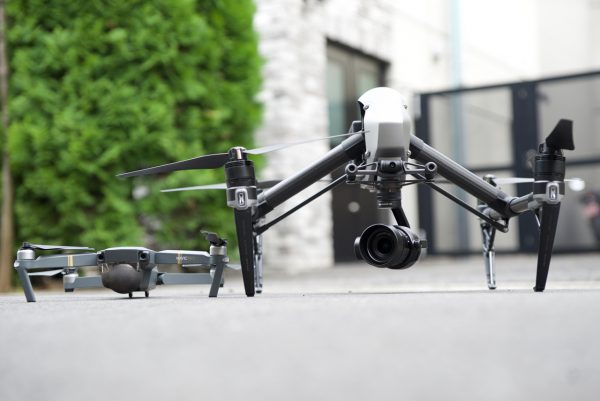
The Inspire 2 is considerably larger and a lot more expensive than the Phantom 4. To warrant that extra expense it really does need to offer me a much better image. So does it? I was keen to do some more tests after my experience flying with it at the motor cross course. I didn’t want to shoot charts indoors as I’m never going to use a drone this way. My tests are not technical lab evaluations, they are my thoughts based on what I saw from the footage I obtained.
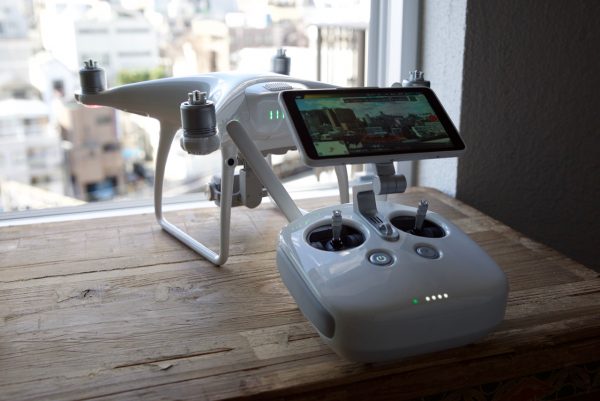
To see what sort of image quality I could obtain from the Inspire 2, I set up a small test to compare it to the Mavic Pro and Phantom 4 Pro shooting the exact same scene. I didn’t for one moment think that the Mavic Pro had any chance of competing with the Inspire or Phantom, but it’s there solely as a reference for what sort of image quality you can obtain at the bottom end of the spectrum.
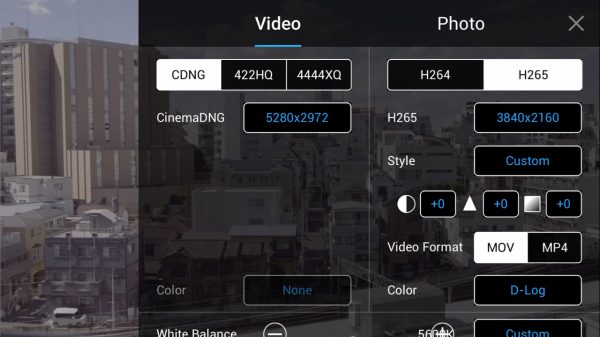
The Inspire 2 and Phantom 4 were both set at 100ISO, shutter 1/400th, aperture at f5.6, white balance at 5600K, and the picture profiles were set in D-Log (except when the Inspire 2 was shooting CinemaDNG). None of the settings for sharpness were touched. As you can’t change the Mavic Pro’s aperture setting I used a Polar Pro ND8 filter, and then set it to 100ISO, shutter 1/400th, white balance 5600K and recorded in D-Log. All three drones were shooting in UHD 25p (apart from when I switched the Inspire 2 to record raw in 5.2K). All three drones have different sensors, different cameras and different focal lengths, so it would be interesting to se how they compared. Yes, It would of been more ideal to have the drones actually flying, but that is a very hard test to keep all the parameters equal.
The first test was the drones looking out at a scene where you can see the city, clouds, and sky. As you can see from the video above I was able to draw some conclusions. The best image (which was no surprise) belonged to the Inspire 2. I personally thought shooting in 5.2K CDNG gave me the best result, but in saying that, recording in both ProRes 422HQ and 4444XQ also achieved really nice results. The differences between ProRes 422HQ and ProRes 4444XQ on the Inspire 2 are very minimal. Both the 4444XQ and 422HQ ProRes options on the Inspire 2 record in 10bit (I confirmed this directly with DJI). Usually if you were recording 12bit 4444XQ, the results should be very comparable to shooting in Raw, but that is not quite the case with the Inspire 2. This is why there is very little real world difference between recording in ProRes 4444XQ and 422HQ on the Inspire 2.
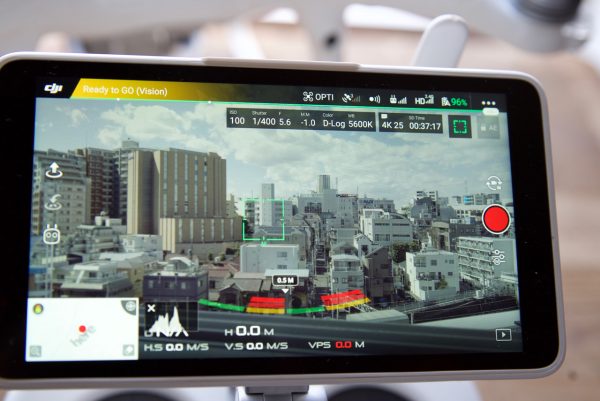
The next best image was the Phantom 4 Pro (H.265), but I did find that the colours seemed quite different to those from the Inspire 2, and the image still looked overly sharp. Before I get any complaints saying that I should have just dialled down the sharpness, I needed to set a base line for all drones. If I had of kept changing the settings and re-testing it would have taken forever (and no one wants to sit through a 2 hour video). The Phantom 4 Pro definitely has a warmer tone to the image with a shift towards magenta. While this could probably be corrected slightly by going with a cooler white balance, at 5600k it was noticeably warmer than the Inspire 2 images. I did think though that the Phantom 4 Pro image held up considerably well to the much more expensive Inspire 2 in this particular test. The Mavic Pro had by far the worst image of the three. While it can look fine if you don’t compare it to anything else, it quickly shows its flaws when you compare it against the other drones. When it comes to actually flying, and moving across objects at any type of speed, the lower bitrate codecs of both the Phantom 4 Pro and the Mavic Pro are going to exhibit a lot more problems than if you were shooting in ProRes or CDNG on the Inspire 2.
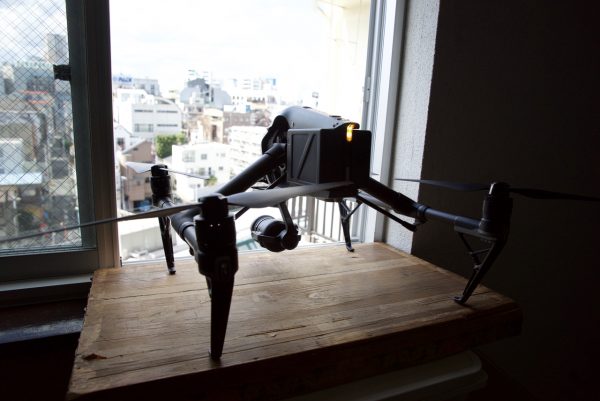
What I found interesting was that once I zoomed in to around 200% on the ProRes recorded footage from the Inspire 2, it looked quite soft. This was a bit of a surprise, however, it did respond very well to adding sharpening in post. This is just something you need to be aware of when shooting in ProRes on the Inspire 2. I’m assuming from these results that there is no sharpening being added during the processing of the image when recording in ProRes.
This test didn’t throw me any curve balls, and the results I obtained were fairly close to the results I thought I would get. In this test all three drones dealt well wth the dynamic range that was present within the scene, but how would they stack up in a much more challenging situation?
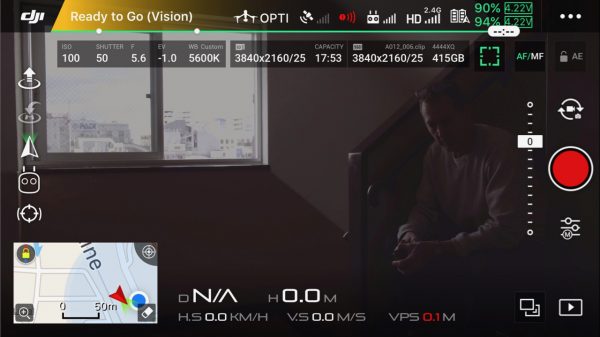
For the next test I placed Jeff on some stairs in front of a bright open window. This is a very challenging scene for any camera to overcome, let alone a drone. In the real world when you are flying a drone you may well be faced with dynamic range challenges, particularly at sunrise and sunset. I thought this test would at least show me how much dynamic range each camera had and how much you could push their respective codecs.
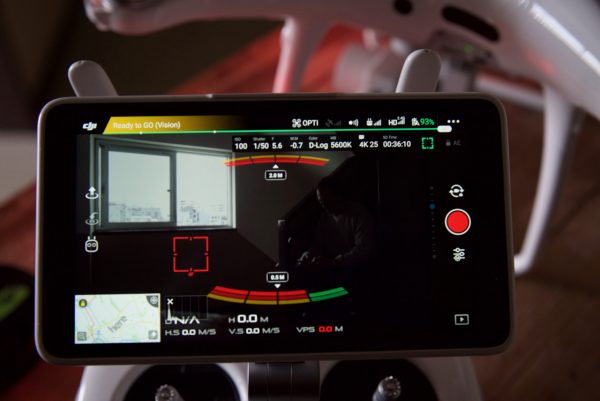
All the cameras were set at 100ISO, shutter 1/50th, white balance 5600k, aperture at 5.6 (apart from the Mavic Pro which was using a ND8 filter) and in D-Log (apart from when the Inspire 2 was shooting in CDNG). As expected the Inspire 2 when shooting in CDNG Raw performed the best over all. Not only did it appear to do the best job with displaying the most amount of dynamic range, but it was also the easiest to grade back into a respectable image. The Inspire 2 shooting ProRes 4444XQ also did a very good job, but I found it harder to get it to look like the CDNG image. I am sure a professional colourist would be able to get the ProRes and CDND images to look very close. Shooting in ProRes 4444XQ or CDNG Raw certainly gives you massive amount of wiggle room when it comes to grading. They need to be pushed extremely hard to show any signs of the image falling apart. The Phantom 4 Pro still managed to maintain a good level of dynamic range that to my eye was not that far behind the Inspire 2. Where the Phantom 4 Pro did struggle is when I attempted to grade the image back to something respectable. With its H.265 codec, once I started to move the image around It started to fall apart relatively quickly. The image was susceptible to banding and noise which you can clearly see as soon as you blow the image up 200%. The Mavic Pro just looked plain awful. Again it surprised me with the amount of dynamic range it was able to capture, but when it came to trying to recover the image it completely fell apart. The low 60Mbps codec looked mushy, and lacked detail almost entirely. While it didn’t show much image noise, there was lots of banding and the image in general just looked horrible. The reason for the lack of sharpness displayed is probably due to a combination of using a ND filter and the codec struggling in tricky lighting conditions. I wouldn’t read too much into the lack of sharpness shown from the Mavic on this particular test.
As I final test I wanted to compare how much real world dynamic range the Inspire 2 had compared to a Sony a7S (as it was the camera I was using to take stills photos of the tests). The a7S was set in S-Log 2 at 3200ISO, with the aperture at f5.6, and it was recording HD internally. I didn’t have a Variable ND handy, so the shutter was set quite high to compensate for the 3200ISO. The Sony a7S did display more dynamic range than the Inspire 2 (with Zenmuse X5S), which DJI claim has 12.8 stops of dynamic range.
From other tests I have done, I did find that I was only really comfortable using the Inspire 2 at up to around 400/640 ISO. After that I found it started to produce noise that I don’t find very pleasing.
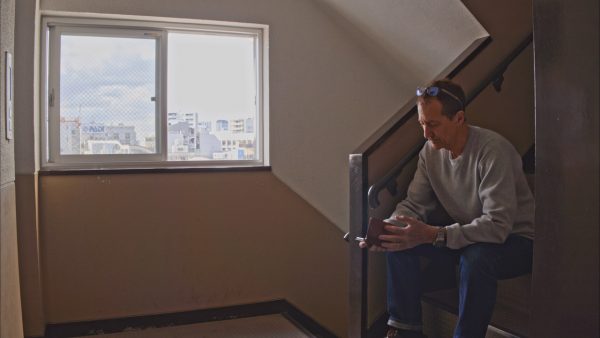
I got Ben Allan ACS to grade up a single frame from the Inspire 2 CDNG, just to see what a proper colourist could do. Ben took the frame I sent him and did a quick RAW adjustment for the EXT and INT exposure. Below you can see the results.
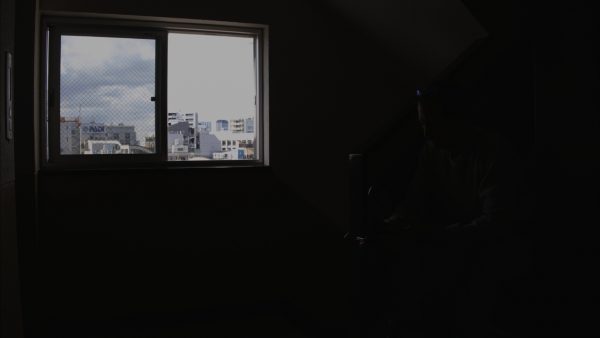
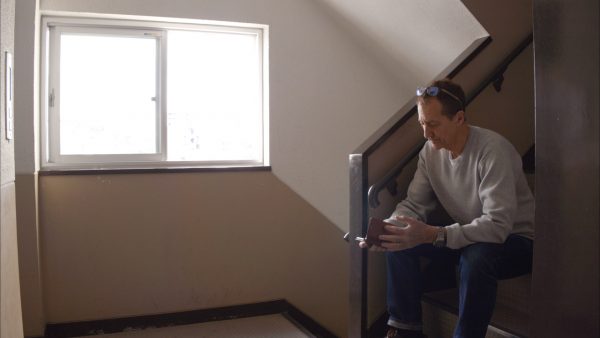
Ben noted that there was still some noise when he graded the image up for internal exposure and said he thought it came up about 4 stops. He also said that the buildings in the background look to be about 1.5 stops over. The left hand part of the window has a reasonable amount of detail in the sky but the sky on the right hand half is fully clipped.
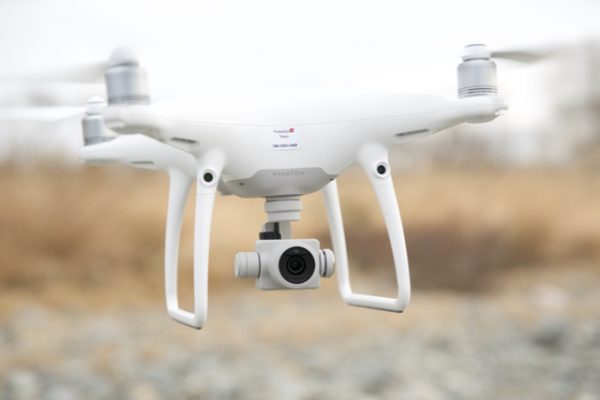
The biggest difference between the Inspire 2 and Phantom 4 Pro when it comes to image quality is certainly the codec. Like most cameras (there are some exceptions to this), if you are recording higher resolutions such as UHD or 4K in a Log profile and doing so to a low bit rate codec, you are going to run into problems if you need to grade the image. The ability to record in ProRes on the Inspire 2 certainly makes grading any type of Log profile material way easier. Even with the Phantom 4 Pro’s H.265 codec, the image can fall apart quickly when pushed. In saying all of this, if you get the image right when your recording it, the Phantom 4 Pro footage can stand up to the Inspire 2 in a lot of scenarios.

The reality is that a lot of the time a drone shot is just going to be inserts combined mainly with ground camera footage. When this is the case people are not suddenly taken out of the story because the look changes mildly. It’s the same when you see inserts from action cameras or other cameras that aren’t the same as your main camera. The majority of audiences aren’t focused on looking for technical problems in a image that is on screen for 10 seconds, they are following the story. I’m not for one second dismissing image quality, but with drone shots, unless the shot looks so completely different to the main camera, your audience is probably not going to notice. Just to prove this point, one of the drone shots used in the Moto X video was from the Mavic Pro. I’m pretty sure know one watching could tell when they first watched it.
Like any camera, if you capture it correctly in the first place and know your cameras limitations, you can achieve good results. The Phantom 4 Pro is very capable of producing images that can stand up to the Inspire 2 as long as you don’t have to grade the image much. Is it as good as footage from the Inspire 2, no it’s not, but in a lot of shooting situations it’s very close.
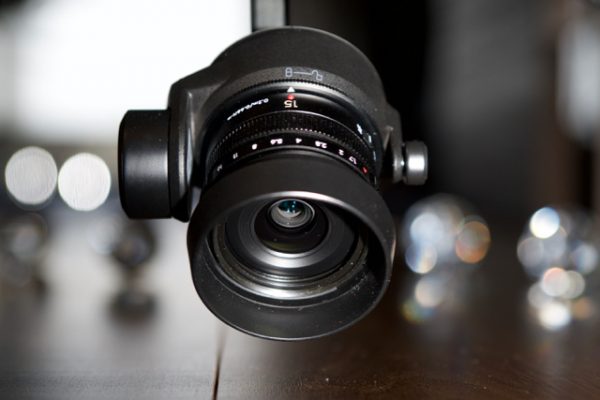
There is no doubt that the Inspire 2 is capable of capturing really nice footage, and being able to capture footage in ProRes or CDNG makes a huge difference if you need to do any sort of grading to your image. The new sensor and gimbal combination works extremely well, and the ability to swap lenses in and out depending on what you happen to be shooting is a big deal. I don’t personally believe many people are going to use the Inspire 2 to shoot both on the ground and in the air. You could use the drone in a pinch as a substitute for a gimbal on the ground, but that’s not really what it is deigned for. In saying that, you could also use the Phantom 4 Pro in the same way. The other problem with shooting on the ground with the Inspire 2 is that it is extremely noisy when powered up (even with the motors not running, and this would make capturing ground based audio extremely difficult.
If image quality is your main priority, and you’re not going to record in ProRes or CDNG, or have the need to interchange lenses, I personally see very little reason for choosing the Inspire 2 over the Phantom 4 Pro. Both the Inspire 2 and the Phantom 4 Pro have their strengths and weaknesses, and only you will know which one works best for you.
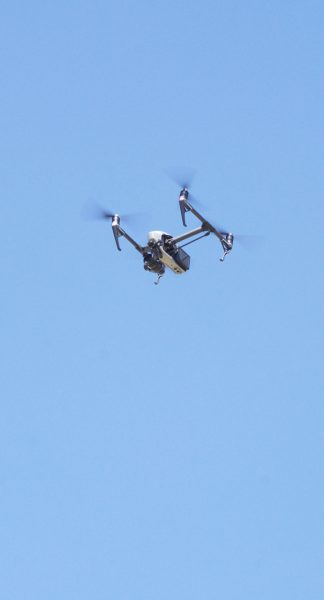
I was impressed by the Inspire 2 and if you can’t afford to strap a $60k camera and lens package to a much bigger drone, then it’s a very good choice. The ProRes and CDNG recording options are great, but unless you are going to heavily grade the image or need the higher 5.2K resolution, I think the ProRes images are 90% as good, and a lot easier to deal with. While the images can look great, it’s not going to take the place of a much larger platform running a high end cinema camera. It’s nice too know that you can get images that will come pretty close though, and in the process, save yourself a substantial amount of money.





